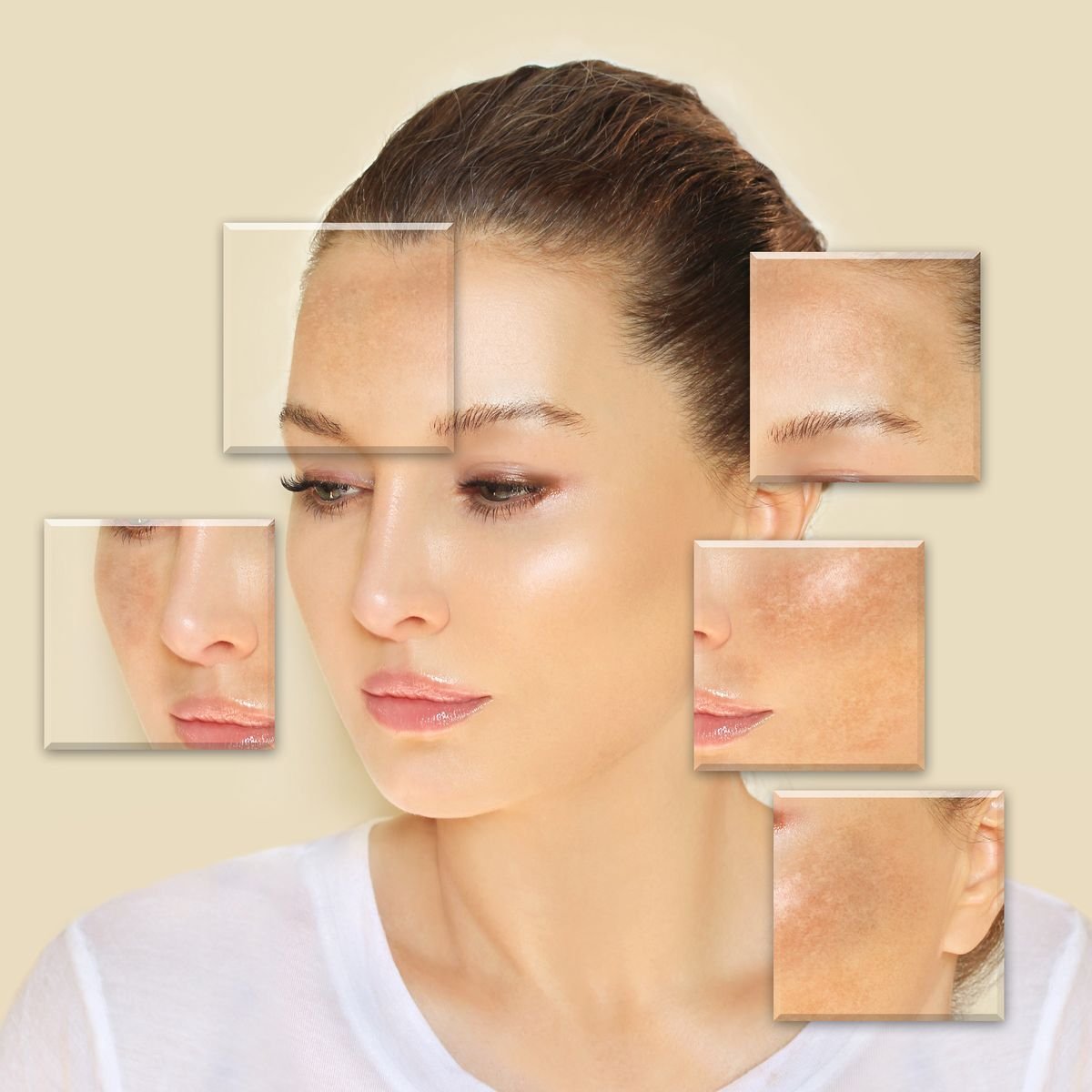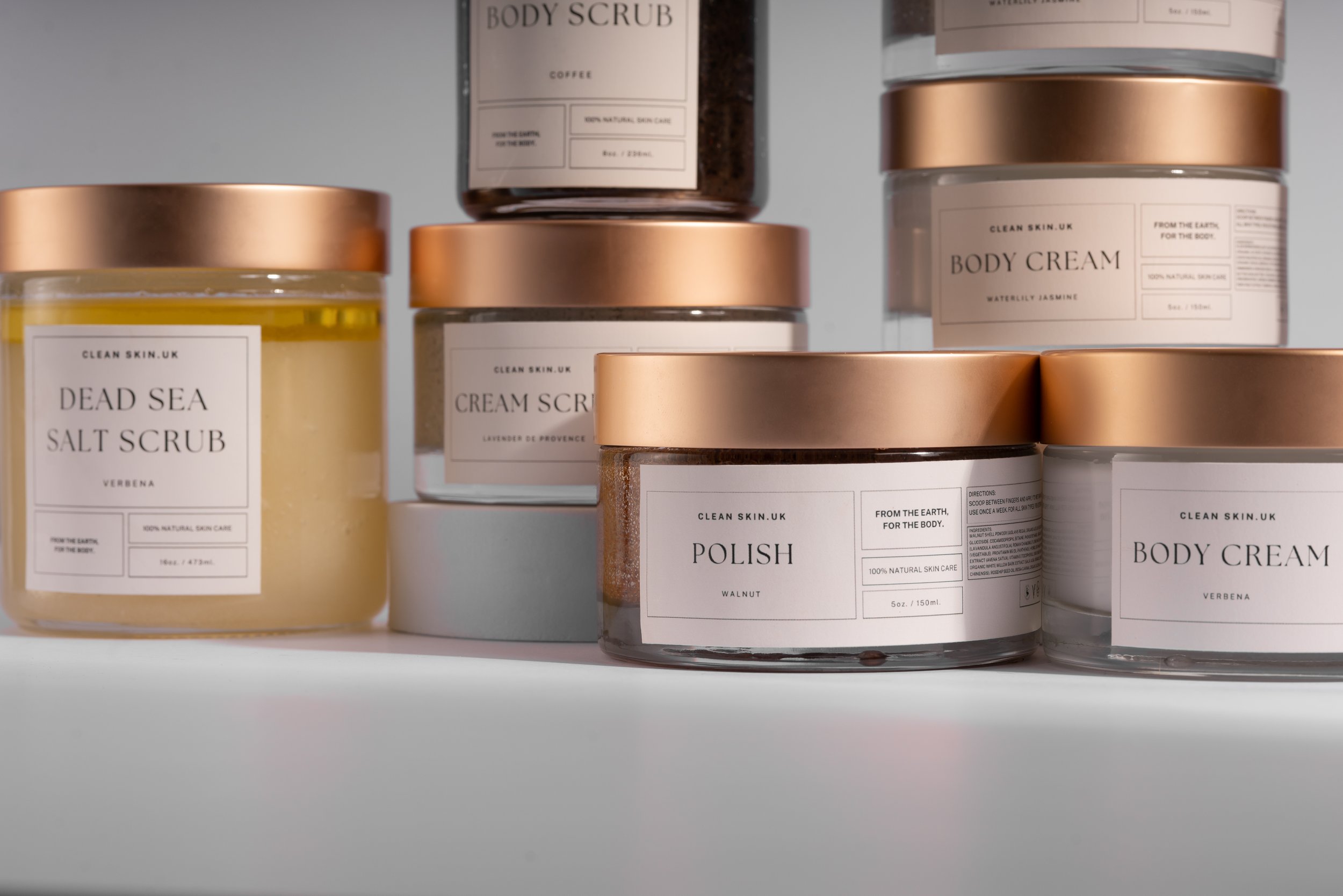In The Dark About Dark Spots? How To Prevent And Treat Discoloration
Dark spots are known by many names: hyperpigmentation, melasma, age spots, liver spots, Solar lentigines, sunspots, and perhaps even more!
While all of these things are indeed dark spots that appear on the skin, many of them occur in slightly different ways.
In order to know how to prevent dark spots, you need to know which type you are personally susceptible to. The methods of prevention and treatment are similar across the board, with minor tweaks here and there.
So, let’s discuss where dark spots come from, so you can learn how to prevent and treat them!
THE TYPES OF DARK SPOTS
There are three different types of dark spots that can form on your skin.
Post-Inflammatory
Dark spots left behind after a bout of acne or after a wound (like a scrape, scratch, or burn) has healed are called post-inflammatory spots. They are formed because the skin cells grown while healing the hole in the skin’s armour happen to have too much melanin in them. It’s a funny little quirk that skin has when reacting to damage and irritation.
Because a wound can be any shape, the dark spot left behind can also be a shape other than a circle. For example, if you burned your arm on the oven, you might have a long, thin mark. When it heals, you could have a long, thin dark spot.
Sunspots
Sunspots aka liver spots aka solar lentigines are freckle-like dots that appear on the skin in places that receive the most sun, like the backs of the hands, shoulders, tops of the feet, chest, upper back, and face. Unlike freckles, they do not fade after a period of time without sun exposure.
Fun fact: these spots are called “liver spots” because it used to be thought that they indicated a poorly-functioning liver. Now we know that is not the case!
They can occur solo or as part of a group and end to be circular or ovular, and are individually pretty small.
Melasma
This type of hyperpigmentation of the skin is caused by hormones. Typically, pregnancy hormones cause areas of the belly and face to darken in a specific pattern, called “linea nigra” and the “mask of pregnancy,” respectively.
HOW TO PREVENT DARK SPOTS
You can take charge and do your best to prevent dark spots from forming. There are a few different methods to this, and it depends on which type of hyperpigmentation you are most likely to get personally.
In General
For all skin types and methods by which dark spots can form, there is one crucial way to reduce the risk: protect yourself from the sun!
Always wear sunscreen with an SPF of at least 40 and reapply throughout the day. If you can, wear clothes that have built-in SPF. Adorn your head with hats, your eyes with sunglasses, and think about using a parasol. Who know, maybe you’ll be the driving force behind the resurgence of parasol style!
Sun damaged skin is more likely to produce dark spots because the UV rays encourage melanin production. So even if you are vulnerable to post-inflammatory hyperpigmentation or melasma, the sun can make you more susceptible to spots and make any existing spots even darker.
For Post-Inflammatory Hyperpigmentation (PIH)
To help skin vulnerable to PIH, there are two main goals: strengthen the skin and reduce breakouts.
Choose skin products that are suitable for your skin type, reduce excess oils, do not cause allergic reactions, and that are gentle enough to not cause abrasion damage (especially for manual exfoliants).
Supply your skin with exfoliants, serums, and moisturisers that supply essential nutrients for growing strong skin. This will make you less likely to receive scratches and wounds, and will help reduce the chance of pigmented skin growing in the event of an injury.
Sunspots / Age Spots
The best and most effective way to prevent these types of spots is the previously-mentioned method of sun protection.
After that, the next goal is to gradually encourage the growth of thicker skin. I don’t mean to become less sensitive emotionally, I mean literally make your skin thicker.
Adopt a habit of using a mixture of chemical and manual exfoliation regularly. Mild irritation of the skin from these practices makes the skin stronger over time as it learns to fortify itself against this type of trauma. Removing the outer layer of skin regularly promotes cell turnover, meaning weak cells are eliminated and only the strong survive. Additionally, cells that have a higher concentration of melanin are shed as cell turnover happens, meaning you can slow down the occurrence of a large group of over-melanated cells from coming together and making a spot.
Melasma
Since melasma is typically an internally-caused type of hyperpigmentation, there isn’t a lot that can be done from the outside. You can, again, protect yourself from the sun, especially the areas experiencing active melasma.
Avoiding medications that encourage melasma when possible is another way to help cut down on the occurrence. If you are pregnant, melasma tends to fade on its own over the course of pregnancy or after birth.
Avoid irritating or harsh soaps as well as having allergic reactions, as irritated skin can sometimes encourage melasma formation.
HOW TO TREAT DARK SPOTS
If you find yourself battling dark spots, there are still plenty of options for you to try to reduce them!
Skincare
Utilising exfoliating scrubs and nourishing moisturising creams are fantastic ways to help fade dark spots. Depending on the ingredient, the chemical makeup can help break up melanin formations, reduce melanin production overall, and encourage cell turnover.
Removing old cells and encouraging new growth is crucial because it helps “push” over-melanated cells to the surface to be shed while healthy, normally-melanated cells grow to replace them.
Look for these ingredients in your skincare products because they act as dark spot removers: aloe, witch hazel, vitamin E (found in jojoba oil, sunflower oil, safflower oil, avocado oil, sweet almond oil), glycerin, citric acid, rosemary, astragalus, chamomile, propolis, gotu kola, wild geranium, dandelion, lavender, reishi, eucalyptus, tea tree, vitamin b5 (panthenol), white willow bark extract (salicylic acid), rose hip seed oil & meadowfoam seed oil (vitamin C), neem, pumpkin extract (AHAs), cocoa butter, shea butter, and green tea.
Procedures, Treatments, and Prescription Medication
There are several medical-grade procedures you can pursue to target dark spots faster and more precisely. The caveat is that most of these procedures require you to take extra care in the recovery stages to avoid sun exposure and otherwise irritating the skin, or else the spots could come back worse than before.
The treatments are:
IPL (Intense Pulsed Light) Treatment and Laser Treatment
Chemical Peels
Cryotherapy
Dermabrasion
Microdermabrasion
Retinol
In the case of melasma especially, certain medications can help reduce the appearance of dark spots. These medications are:
Hydroquinone
Arbutin
Alpha hydroxy acids
L-cysteamine
Tranexamic acid
Over the Counter Products
In between nourishing skincare and medical treatments lies strong drugs you can apply without a prescription. Ensure that if you use these products, you follow the directions carefully to avoid causing harm to your skin! Leaving these products on for too long or using them too often can cause chemical burns and even make dark spots worse than before.
The ingredients you will want to look for are deoxyarbutin, glycolic acid, alpha hydroxy acid, and kojic acid in strengths that are higher than your average skincare product.
Dark spots aren’t something to fear. They occur on almost everyone at one point or another. But, you can take control to prevent them as good as possible, and you have options to treat them if they do pop up. Armed with this knowledge, go forth without worry about dark spots!



